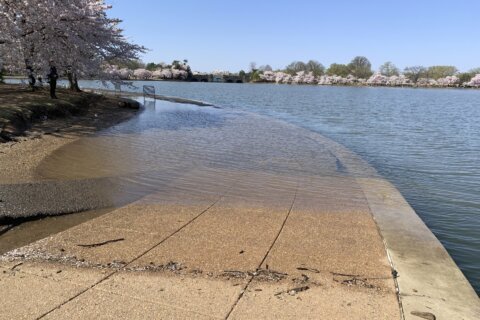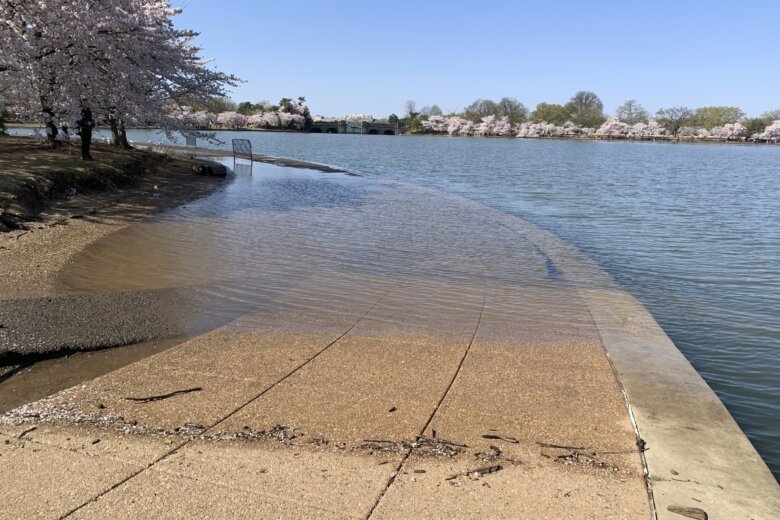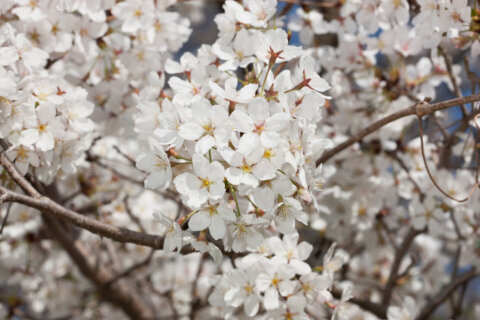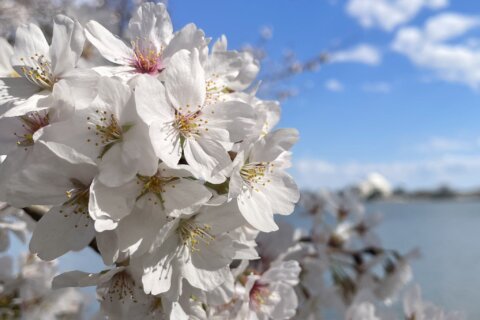
As part of a multimillion dollar rehabilitation project to address flooding issues, officials say 140 of D.C.’s famed cherry trees will be cut down along the Tidal Basin and Potomac River for construction.
During the three-year, $113 million project, the National Park Service said Wednesday it will restore the sinking sea walls along the Tidal Basin and the Potomac River through West Potomac Park. When the work is done, the park service said it will plant even more cherry trees to replace the ones that are cut down.
The construction won’t impact the 2024 National Cherry Blossom Festival, the park service said.
But Mike Litterst, a spokesman for the National Park Service, told WTOP the department is encouraging visitors to come see the flowers before construction kicks off later this spring.
“We’re encouraging folks to come down to the Tidal Basin one last time before that experience is interrupted for a couple of years by construction,” Litterst said.
The trail around the Tidal Basin will stay open during the repairs but some parts of the path may have temporary pedestrian detours. In future years, that could mean visitors to the annual cherry blossom festival aren’t able to get as close to the seawalls as before the repairs.
In May, 140 flowering cherry trees will be removed between the Thomas Jefferson Memorial and the Franklin Delano Roosevelt Memorial to prepare for construction, the park service said.
More Cherry Blossom Festival News
- FAQ: What you need to know about the National Cherry Blossom Festival 2024
- DC’s cherry blossoms closing in on peak bloom with ‘peduncle elongation’
- Identifying D.C. cherry blossoms: Do you know your Yoshino from your Kwanzan?
- Enjoy D.C. cherry blossoms from a private hot tub or tiki bar — on the Potomac
- Miles from the Tidal Basin, an alternative for cherry blossom lovers
A total of about 300 total trees (counting the cherry trees) that are in the way of construction will need to be cut down. The project is expected to wrap up in 2027 and when it’s over the park service said it will replace 455 trees — including 274 cherry trees — in the area.
“Tree locations and topography were considered in the construction planning, and every effort was made to minimize the number of trees that must be removed,” the National Park Service said in a news release.
While the park service didn’t specify what types of cherry trees are being removed, the Tidal Basin is mostly surrounded by the famed Yoshino variety. There are around 3,800 cherry trees in the park.
Seawalls no longer ‘structurally sound’
Rising sea levels and poor drainage have done a number on the sea walls over the years — they were initially built in the late 1800s to early 1900s, and since then, some portions have settled 5 feet since initial construction.
“We are seeing every day, twice-a-day during high tide water coming out of the Tidal Basin and over the sidewalks, into the roots of the cherry trees and threatening some of the memorials,” Litterst said.
As a result, the roots of the cherry trees are being overexposed to water when the water comes over the seawalls.
“We’ve had to take down a dozen or more trees. We have other ones that are clearly in failing health, simply because they’re being overwatered,” Litterst said.
Some of the repairs include:
- Removing the existing sea walls and adding foundation that will prevent sea walls from settling.
- Salvage stones from the historic wall to reuse, when possible.
- Improving accessibility around the Tidal Basin by widening or repairing walkways.
- Adjusting landscaping to better drainage.
“The sea walls are no longer structurally sound and threaten visitor safety and the historic setting, including the cherry trees around the Tidal Basin,” the park service said.
WTOP’s Cheyenne Corin contributed to this report.
Get breaking news and daily headlines delivered to your email inbox by signing up here.
© 2024 WTOP. All Rights Reserved. This website is not intended for users located within the European Economic Area.









